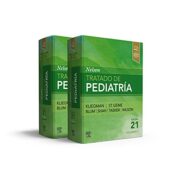GENERAL PEDIATRICS
The Early Childhood Coaching Handbook, 2nd edition 2019 Original PDF
GENERAL PEDIATRICS
GENERAL PEDIATRICS
Child Abuse Pocket Atlas Series Volume 5: Child Fatality and Neglect 2016 Original PDF
GENERAL PEDIATRICS
Child Abuse Pocket Atlas Series Volume 3: Head Injuries 2016 Original PDF
GENERAL PEDIATRICS
Child Abuse Pocket Atlas Series Volume 2: Sexual Abuse 2016 Original PDF
GENERAL PEDIATRICS
Child Abuse Pocket Atlas Series Volume 1: Skin Injuries 2016 Original PDF
GENERAL PEDIATRICS
Pediatric Abusive Head Trauma Pocket Atlas: Medical Mimics Volume 2 2016 Original PDF
GENERAL PEDIATRICS
Pediatric Abusive Head Trauma Pocket Atlas: Traumatic Injuries Volume 1 2016 Original PDF
GENERAL PEDIATRICS
GENERAL PEDIATRICS
GENERAL PEDIATRICS
GENERAL PEDIATRICS
Nelson. Tratado de pediatría (21ª ed.) (Spanish Edition) 2020 EPUB + Converted PDF
GENERAL PEDIATRICS
Infants, Children, and Adolescents, 9th Edition 2020 Original PDF
GENERAL PEDIATRICS
GENERAL PEDIATRICS
GENERAL PEDIATRICS
Fundamental Otology: Pediatric and Adult Practice 2013 Original PDF
GENERAL PEDIATRICS
Interdisciplinary Pediatric Palliative Care, 2nd Edition 2022 Original PDF
Introduction
Understanding General Pediatrics: A Guide for Parents is an essential resource for parents of children of all ages. This comprehensive guide provides detailed information on the physical, mental, and emotional development of children from infancy to adolescence. It covers topics such as nutrition, immunizations, common illnesses, safety, and more. With easy-to-understand language and helpful illustrations, this book is a must-have for any parent looking to better understand their child’s health and wellbeing.
Common Childhood Illnesses and How to Treat Them
Common childhood illnesses are a fact of life for many children and their families. From the common cold to more serious illnesses such as chickenpox, measles, and mumps, it is important to be aware of the symptoms and treatments for these conditions.
The common cold is one of the most common childhood illnesses. Symptoms include a runny nose, sneezing, coughing, sore throat, and fever. Treatment typically involves rest, fluids, and over-the-counter medications such as ibuprofen or acetaminophen to reduce fever and pain. It is also important to keep the child away from other people to prevent the spread of the virus.
Chickenpox is another common childhood illness. Symptoms include an itchy rash, fever, and fatigue. Treatment typically involves rest, fluids, and over-the-counter medications such as ibuprofen or acetaminophen to reduce fever and pain. A doctor may also prescribe an antiviral medication to help reduce the severity of the illness.
Measles is a highly contagious viral infection that can cause fever, cough, runny nose, and a red rash. Treatment typically involves rest, fluids, and over-the-counter medications such as ibuprofen or acetaminophen to reduce fever and pain. A doctor may also prescribe an antiviral medication to help reduce the severity of the illness.
Mumps is a viral infection that can cause fever, headache, and swollen glands in the neck. Treatment typically involves rest, fluids, and over-the-counter medications such as ibuprofen or acetaminophen to reduce fever and pain. A doctor may also prescribe an antiviral medication to help reduce the severity of the illness.
It is important to be aware of the symptoms and treatments for these common childhood illnesses. If your child is exhibiting any of the above symptoms, it is important to contact your doctor for further evaluation and treatment. Early diagnosis and treatment can help reduce the severity of the illness and prevent complications.
Vaccinations: What You Need to Know
Vaccinations are an important part of preventive health care. Vaccines help protect us from serious illnesses and diseases, such as measles, mumps, rubella, polio, and whooping cough. Vaccines work by introducing a weakened or killed form of the virus into the body, which stimulates the immune system to produce antibodies that will fight off the disease if it is ever encountered in the future.
It is recommended that all children receive vaccinations according to the Centers for Disease Control and Prevention (CDC) immunization schedule. This schedule is designed to ensure that children are protected against the most common and dangerous diseases at the earliest possible age. It is also important for adults to stay up-to-date on their vaccinations, as some diseases can be more severe in adults than in children.
When considering whether or not to vaccinate your child, it is important to understand the risks and benefits associated with each vaccine. Vaccines are generally very safe, but like any medical procedure, there is a small risk of side effects. The most common side effects are mild and include soreness, redness, or swelling at the injection site, fever, and headache. Serious side effects are rare, but can occur. It is important to discuss any concerns you may have with your doctor before getting vaccinated.
In addition to the safety of vaccines, it is important to consider the effectiveness of the vaccine. Vaccines are highly effective at preventing the spread of disease, but they do not provide 100% protection. It is still possible to contract a disease even after being vaccinated, although the risk is much lower.
Finally, it is important to remember that vaccinations are not just about protecting yourself and your family. Vaccines help protect entire communities by reducing the spread of disease. When enough people are vaccinated, it creates what is known as “herd immunity”, which helps protect those who cannot be vaccinated due to medical reasons.
Vaccinations are an important part of preventive health care and should be taken seriously. It is important to talk to your doctor about any questions or concerns you may have before getting vaccinated. By staying up-to-date on your vaccinations, you can help protect yourself, your family, and your community from serious illnesses and diseases.
Nutrition and Feeding for Infants and Toddlers
Nutrition and feeding for infants and toddlers is an important part of their overall health and development. Proper nutrition during this stage of life helps to ensure that children are getting the nutrients they need to grow and develop properly. It also helps to prevent health problems in the future.
Infants and toddlers require a variety of nutrients, including proteins, carbohydrates, fats, vitamins, minerals, and water. Breast milk or formula is the primary source of nutrition for infants up to 12 months old. After 12 months, solid foods should be introduced gradually. A balanced diet should include a variety of foods from all food groups, such as fruits, vegetables, grains, dairy products, and proteins.
It is important to provide healthy snacks throughout the day to ensure that your child is getting enough calories and nutrients. Healthy snacks can include fresh fruits and vegetables, whole grain crackers, yogurt, cheese, nuts, and seeds. Avoid giving your child sugary snacks and drinks, as these can lead to tooth decay and obesity.
When introducing solid foods, it is important to start with single-ingredient foods and introduce new foods one at a time. This will help you identify any potential allergies or sensitivities. It is also important to avoid adding salt, sugar, or honey to your child’s food.
It is important to establish a regular meal and snack schedule for your child. This will help them learn when to expect food and will help them develop healthy eating habits. Offer meals and snacks at regular times throughout the day and try to limit snacking between meals.
It is also important to create a positive environment around mealtimes. Make sure that mealtimes are calm and relaxed and that your child has plenty of time to eat. Avoid distractions such as television or toys during mealtimes.
Finally, it is important to be patient and understanding when it comes to feeding your child. Children may not always eat what is offered and may refuse certain foods. Don’t force your child to eat, but instead offer a variety of healthy options and let them choose what they want to eat.
Developmental Milestones and When to Seek Help
Developmental milestones are the skills that children learn as they grow and develop. These milestones include physical, cognitive, social, and emotional development. They are important indicators of a child’s overall health and well-being.
Physical development includes gross motor skills such as walking, running, jumping, and throwing; fine motor skills such as grasping objects, using scissors, and writing; and sensory skills such as vision, hearing, and touch. As children grow, they should be able to do more complex activities such as riding a bike, tying their shoes, and playing sports.
Cognitive development involves learning language, problem solving, memory, and reasoning. Children should be able to understand and use language, recognize shapes and colors, count, and remember information. As they get older, they should be able to think abstractly, solve problems, and make decisions.
Social and emotional development involve forming relationships with others, expressing emotions, and understanding the feelings of others. Children should be able to interact with peers, share toys, and take turns. They should also be able to express their feelings in appropriate ways and understand how their actions affect others.
It is important to monitor your child’s development and seek help if you have any concerns. If your child is not meeting developmental milestones or is having difficulty with certain tasks, it may be a sign of a delay or disorder. Talk to your pediatrician or a specialist if you have any concerns about your child’s development. Early intervention can help your child reach their full potential.
Safety Tips for Keeping Your Child Healthy
When it comes to keeping your child healthy, safety should be a top priority. As parents, it is our responsibility to ensure that our children are safe and protected from harm. Here are some tips for keeping your child healthy and safe:
1. Make sure your child is up-to-date on their vaccinations. Vaccines are one of the most important ways to protect your child from serious illnesses and diseases. Talk to your doctor about what vaccines your child needs and when they should receive them.
2. Practice good hygiene. Teach your child to wash their hands often with soap and water, especially after using the bathroom or before eating. Encourage them to cover their mouth and nose when they sneeze or cough.
3. Ensure your child is wearing a helmet when riding a bike, skateboard, or scooter. Helmets can help prevent head injuries in the event of an accident.
4. Supervise your child when they are playing outdoors. Make sure they are playing in a safe area and that they are not engaging in any dangerous activities.
5. Make sure your child is getting enough sleep. A lack of sleep can lead to fatigue, irritability, and difficulty concentrating. Aim for 8-10 hours of sleep per night for school-aged children.
6. Provide your child with healthy meals and snacks. Eating a balanced diet will help keep your child’s body strong and healthy.
7. Limit your child’s screen time. Too much time spent in front of screens can lead to physical and mental health issues.
8. Teach your child about stranger danger. Explain to them that it is not safe to talk to strangers or accept gifts from them.
9. Make sure your child knows how to swim. Swimming lessons can help prevent drowning accidents.
10. Keep your home and car smoke-free. Secondhand smoke can cause serious health problems in children.
By following these safety tips, you can help keep your child healthy and safe. Remember to always supervise your child and talk to them about potential dangers.
Conclusion
Understanding General Pediatrics: A Guide for Parents is an invaluable resource for parents of children of all ages. It provides comprehensive information on a wide range of topics, from nutrition and development to common illnesses and treatments. With its easy-to-understand language and helpful illustrations, this guide can help parents make informed decisions about their child’s health and well-being. By understanding the basics of general pediatrics, parents can ensure that their children receive the best care possible.






























